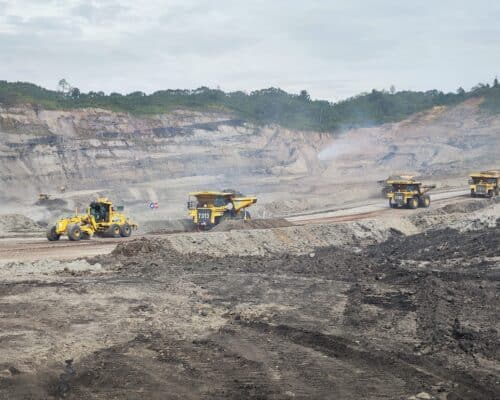Major LNG Liquefaction Projects 2023-2027
03 April 2023 – by Tim Daiss
As the world desperately tries to pivot away from fossil fuel usage for the power sector, the oil and liquefied natural gas industry is still heading in the wrong direction, proving once again how bad LNG liquefaction projects are for the environment.
By 2024, global LNG investment will hit USD 42 billion, a 50% jump from spending last year. These proposed greenfield investments were 200 times the amount in 2020, when just USD 2 billion was invested in LNG development due to the pandemic.
Even worse, the sector is still planning even more LNG liquefaction projects at a record pace. Global LNG export capacity is set to increase by 35% by 2027.
Asian LNG Demand Raises Concerns
On the demand side of the equation, the Asia-Pacific region will add 442.2 million tonnes per annum (mtpa) worth of LNG import capacity.
The region has the most greenfield LNG import projects approved or in the pipeline for development globally. This includes new Southeast Asian LNG importers, the Philippines (with eight LNG projects approved) and Vietnam.
The total cost for the region is estimated at USD 120 billion, representing 65% of the world’s LNG import terminals under development. By comparison, planned European import projects amount to 164.7 mtpa and comprise 24% of the global total.
The Asia-Pacific region currently has over 120 operating LNG terminals, with more in development. The number of facilities is significant given that 70% of air pollution-related deaths from greenhouse gas (GHG) emissions occur in Asia.
Recent studies have shown how bad LNG is for heating the environment. The amount of overall emissions from the fuel are closer to coal than originally thought, with an LNG terminal sometimes emitting even more than coal.
A Race Against the Clock
LNG build-out comes despite stark methane emission warnings from the 2021 COP26 meeting. Methane, abundant across the gas and LNG value chain, traps heat in the environment 25 times more energy effectively than carbon dioxide.
The International Energy Agency (IEA) has also sounded the gas usage alarm, with scientists and experts adding to this dire warning.
The US Leads LNG Development
North America (the US, Canada and Mexico) will largely lead future LNG export project development. Over 460 mtpa worth of projects are underway in North America, costing an estimated USD 321 billion. The US leads the region by far with 322.5 mtpa, followed by Canada (75.6 mtpa) and Mexico (62.5 mtpa).
The US’ proposed 322.5 mtpa of new pipeline capacity and 24 new projects comprise half of the global export capacity currently under development. According to state and federal permits, these projects could emit more than 90 million tonnes of emissions a year.
Russian LNG Development
North America is only part of the whole LNG production capacity development equation. Despite Western sanctions slapped against Russia over its invasion and subsequent war in Ukraine, the country is still ramping up its LNG capacity with another 113.4 mtpa.
Aussie LNG Stumbles Due to Climate Litigation
Australia, however, offers one bright spot. The world’s top LNG exporter is struggling to expand its LNG and natural gas supply sector due to increased climate litigation against the sector in general. Environmental groups have also caused the postponement of construction of major offshore gas development projects.
Qatar’s Massive LNG Project
LNG powerhouse Qatar is increasing its liquefaction capacity of 77 mtpa to a record-breaking 126 mtpa by 2027 through the development of its prolific North Field East gas field.
Project partners consist of Western oil majors intent on keeping their fossil fuel ambitions alive. They include US supermajors Chevron and Conoco Philips, UK-listed Shell, France’s energy major TotalEnergies and Italy’s Eni.
Western Oil Majors Get Caught Flat-footed
Many of these oil companies have pledged to become net zero by 2050. However, their commitment to even more fossil fuel development has incurred pushback from environmental groups and activist investors.
Moreover, how can these companies become net-zero while continually financing and backing major fossil fuel projects? The answer is that they can’t, despite their claims to the contrary. The United Nations recently blasted these oil majors’ fake net-zero pledges, labelling them as “greenwashing”.
The Mad Dash for Gas
An argument is also being made that many governments are pursuing LNG development to shore up their respective energy security. Notably, any energy security gains made by further fossil fuel development are offset by increased carbon emissions that negatively impact populations and contribute to overall global warming.
During COP27, Climate Analytics Chief Executive Bill Hare summarised the situation perfectly. In reference to global warming, he said, “The dash for gas globally is at such a scale that it risks undermining the world’s ability to limit.”
Clashing Narratives
Indicative of the clash between the two sides of the argument, United Arab Emirates (UAE) President Sheikh Mohammed bin Zayed al-Nahyan said at the opening of the COP27 summit that his country would continue to supply oil and natural gas supply, “for as long as the world needs it“.
One way the fossil fuel industry advances its own natural gas narrative is by advocating carbon capture technology (CCS) to rein in emissions. Yet, there is a plethora of problems with relying on that technology to reduce emissions.
First, it hasn’t been proven at scale. It’s also extremely expensive and energy-intensive, and experts are increasingly alarmed at the possibility of leaks once the carbon is stored.
Reckless Liquefied Natural Gas Development
It is environmentally and socially reckless for these governments to continue these LNG projects for development. This is due to the emissions and methane-leakage problems associated with using these LNG export facilities for power production, as well as the time frame for developing these expensive and emissions-intensive projects.
Since the cost of renewables development has largely dropped below that of construction of its own LNG projects and its fossil fuel counterparts, the need for these projects must be questioned even more.
Against this massive LNG development backdrop, the 2023 UN Climate Change Conference, including COP28, will have its hands full when it takes place in Dubai from November 30 to December 12.
Much of their task, like those summits before them, involves convincing and proving how bad the LNG projects are for the environment.
by Tim Daiss
Tim has been working in energy markets in the Asia-Pacific region for more than ten years. He was trained as an LNG and oil markets analyst and writer then switched to working in sustainable energy, including solar and wind power project financing and due diligence. He’s performed regulatory, geopolitical and market due diligence for energy projects in Vietnam, Thailand and Indonesia. He’s also worked as a consultant/advisor for US, UK and Singapore-based energy consultancies including Wood Mackenzie, Enerdata, S&P Global, KBR, Critical Resource, and others. He is the Chief Marketing Officer (CMO) for US-based lithium-sulfur EV battery start-up Bemp Research Corp.
Read more




